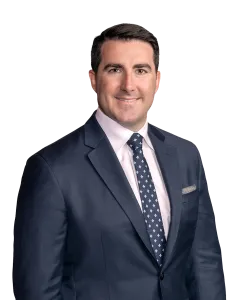After 2nd Circ. Ruling, Insider Trading Laws Need Clarification
*Originally published by Law360
On December 27, 2022, a panel of the US Court of Appeals for the Second Circuit reversed the convictions of four defendants convicted of wire fraud, Title 18 securities fraud, and conversion of government property for their roles in a scheme to trade securities based on confidential information misappropriated from the Centers for Medicare & Medicaid Services.
The court in US v. Blaszczak[1] held that the defendants misappropriated and traded on regulatory information — not information with economic value to CMS that constituted property under the federal fraud and conversion statutes.
Most striking, the concurring and dissenting opinions agreed that insider trading law under Title 18 requires further clarification.
The concurrence contended that Title 18 securities fraud may unfairly encompass trading on tips from insiders who do not receive a personal benefit in exchange, unlike under Section 10(b) of the Securities Exchange Act and Rule 10b-5, while the dissent argued that the majority opinion effectively legalizes insider trading based on tips from government insiders.
The competing views may trigger en banc or US Supreme Court review, as well as calls for further legislation to clarify the law.
This article unpacks the decision and assesses its impact.
Blaszczak I: Second Circuit Upholds Fraud Convictions for Trading on Confidential CMS Information
Between 2009 and 2014, a CMS employee named Christopher Worrall gave a hedge fund consultant named David Blaszczak, who previously worked for CMS, “nonpublic information about the timing and substance of proposed CMS rule changes.” The changes were expected to modify reimbursement rates for certain types of medical care for various health conditions.
In turn, Blaszczak gave the information to hedge fund partners Theodore Huber and Robert Olan, and the hedge fund, Deerfield Management Co. LP, used the information to conduct profitable short sales of shares in companies that would be negatively affected by the rule changes.
Following a trial in the US District Court for the Southern District of New York in 2018, all four defendants were convicted of one or more counts of conversion of government property[2] and wire fraud,[3] and the three private-sector defendants were convicted of Title 18 securities fraud[4] and conspiracy.[5]
The defendants were all acquitted of Title 15 securities fraud,[6] likely because the CMS employee who shared the confidential information did not receive a personal benefit in exchange for the information. This is an element of a tipper-tippee insider-trading securities fraud under Section 10(b) and Rule 10b-5, as held in US Supreme Court’s 1983 decision Dirks v. US Securities and Exchange Commission,[7] but not an element of insider-trading securities fraud under Title 18.
On appeal, the defendants argued that their convictions were invalid because CMS information about the timing and substance of reimbursement rate changes was not money or property under the fraud statutes, or money or a thing of value under the conversion statute.
A panel of the Second Circuit rejected those arguments in Blaszczak I,[8] and the court denied rehearing. The defendants then petitioned the Supreme Court for a writ of certiorari.
While the defendants’ Supreme Court petition was pending, the Supreme Court decided Kelly v. US in 2020.[9] In Kelly, commonly known as the Bridgegate case, the court reversed the fraud convictions of state officials who sought political retribution against a local mayor by reducing the toll lanes to the George Washington Bridge and creating gridlock traffic for the mayor’s constituents.
The court held that, to violate the fraud statutes, the property at issue “must be ‘an object of the fraud’ ” and more than an incidental aspect of the scheme.
Because the officials merely altered a regulatory decision about the toll plaza’s use, rather than misappropriating the lanes from the government or converting them to nonpublic use, they did not scheme to obtain money or property. And the use of Port Authority employees’ labor to advance the scheme was “only an incidental byproduct of the scheme.”
Following Kelly, the solicitor general agreed that the Supreme Court should vacate the panel’s decision in Blaszczak I and remand the case back to the Second Circuit for further consideration in light of Kelly. The Supreme Court agreed.[10]
Blaszczak II: Second Circuit Reverses Itself and Holds that CMS Information Was Regulatory Information, Not Property
On remand to the Second Circuit, the solicitor general’s office took the unusual step of agreeing that the substantive fraud convictions should be reversed or remanded for dismissal in light of Kelly, rather than trying to save the convictions by arguing that they satisfy Kelly.[11]
The solicitor general reasoned that CMS has an economic interest in its confidential predecisional information because it invests time and resources into it, but acknowledged that CMS’ labor costs were not an object of the scheme.
The panel majority agreed that the convictions based on the wire fraud, conversion and Title 18 securities fraud should be reversed.
In an opinion penned by US Circuit Judge Amalya Kearse and joined in by US Circuit Judge John Walker, the majority reasoned that the government’s decision to seek dismissal does not automatically govern, but that it was correct and owed deference in this case.
The court concluded that advance information about CMS’ rule changes was regulatory information, not property or a thing of value that could be fraudulently obtained or converted akin to proprietary information stolen from a commercial entity.
The court remanded the remaining conspiracy convictions for further proceedings, including a possible new trial, because they could have included a proper or improper fraud object, and the government failed to demonstrate harmless error.
Concurrence Raises Concerns About Insider Trading Law
A separate concurrence by Judge Walker, joined by Judge Kearse, highlighted a “glaring anomaly” from Blaszczak I that was not at issue on remand but that the concurrence contended “warrants further attention by Congress and the courts.”
The concurrence observed that Blaszczak I held that, unlike Section 10(b) and Rule 10b-5, insider trading securities fraud under Title 18 does not require, as an element, that the tipper received a personal benefit in exchange for the tip.
The concurrence opined that this ruling could lead to overdeterrence and inhibit lawful market activities, such as when an analyst seeks to ferret out corporate information without providing a quid pro quo. And it pointed out the oddity of requiring fewer elements to commit insider trading under Title 18, a criminal statute, than under Section 10(b) and Rule 10b-5, which are criminal and civil, offending “traditional notions of fair play.”
The court concluded that “[t]his asymmetry deserves the further attention of our court, the Supreme Court, and Congress.”
Dissent in Blaszczak II: Decision Permits Insider Trading on Government Information
A vigorous dissent by US Circuit Judge Richard Sullivan, who authored the majority opinion in Blaszczak I, argued that the convictions should be affirmed because the CMS information constituted “confidential, proprietary information.”
The dissent reasoned that such information constitutes property within the meaning of the fraud statutes under the US Supreme Court’s 1987 decision in Carpenter v. US,[12] the landmark decision that held that prepublication information leaked by a Wall Street Journal reporter to traders constituted fraud because the information was proprietary and thus corporate property.
The dissent also contended that the majority decision conflicted with circuit precedent from US v. Girard,[13] where the Second Circuit in 1979 upheld conversion and conspiracy convictions based on the theft and sale of confidential US Drug Enforcement Administration records regarding informants.
The dissent also disagreed with the public policy of the majority opinion, opining that it “permits sophisticated insiders to leverage their access to confidential government information and sell it to the highest bidders.”
And it took issue with the concurrence, asserting that it was “a gratuitous advisory opinion” that addressed issues outside of the Supreme Court’s remand order that were not briefed by the parties, and whose conclusions the dissent disagreed with on the merits. The dissent added that the majority and concurring opinions needlessly confuse the state of insider trading law.
Impact of Blaszczak II
In the short term, the concurrence’s pointed criticism of Blaszczak I and the dissent’s aggressive attacks on Blaszczak II could garner the attention of the rest of the Second Circuit, and an active judge could call for a poll to decide whether to rehear the case en banc in order to clarify the insider trading securities fraud requirements under Title 18.
The Supreme Court could also take up an insider trading case in the coming years in order to harmonize or clarify insider trading law under Title 15 and Title 18, and perhaps establish a personal benefit test as an element of Title 18 securities fraud — a step an appellate court may be unwilling to take on its own.
If the decision stands, the confusion predicted by all three members of the panel could come to fruition, as market analysts, litigants and courts grapple with determining whether and when it is legal under the Title 18 securities fraud statute to obtain and trade on confidential information received from corporate or government insiders when the tippee does not provide the tipper with a personal benefit in exchange.
The issue of whether confidential information obtained from a corporate or government insider is proprietary or has economic value such that it could be the subject of a fraud or conversion charge can be equally vexing.
Aggressive prosecutors could take the position that virtually any information formulated by a company or the government has economic value due to labor costs — a position that seems to have currency with the solicitor general’s office — in which case a factual dispute could arise over whether the labor costs were the object of the fraud scheme, or merely an incidental byproduct of the scheme, as in Kelly.
In the interest of fair play and fair notice, courts and possibly Congress will need to clarify the bounds of these statutes in the coming years, particularly in the insider trading context.
A link to the original published version of this article is here.
[1] US v. Blaszczak , 2022 WL 17926047, – F.4th – (2d Cir. 2022).
[2] 18 USC § 641.
[3] 18 USC § 1343.
[4] 18 USC § 1348.
[5] 18 USC §§ 371, 1349.
[6] 15 USC §§ 78j(b), 78ff; 17 C.F.R. § 240.10b-5 (SEC Rule 10b-5).
[7] Dirks v. SEC , 463 US 646 (1983).
[8] United States v. Blaszczak , 947 F.3d 19 (2d Cir. 2019), cert. granted, judgment vacated sub nom. Olan v. United States , 141 S. Ct. 1040 (2021), rev’d in part on remand by Blaszczak II, 2022 WL 17926047, – F.4th – (2d Cir. 2022).
[9] Kelly v. US , 140 S. Ct. 1565 (2020).
[10] Olan v. United States , 141 S. Ct. 1040 (2021).
[11] Supplemental Brief on Behalf of the United States, United States v. Blaszczak, Nos. 18-2811(L), 18-2825(CON), 18-2867(CON), 18-2878(CON) (2d Cir. June 4, 2021).
[12] Carpenter v. US , 484 US 19, 26 (1987).
[13] US v. Girard , 601 F.2d 69, 71 (2d Cir. 1979).
Contacts
- Related Practices


